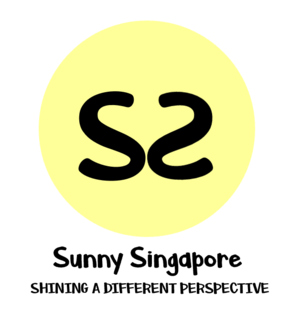Sunny Singapore
Contents
Introduction
As the jewel of Southeast Asia, Singapore is a chart topper for many global, accredited rankings. However, these prominent awards narrowly focused on the nation’s economic development, technological infrastructure and overall prosperity. In fact, much less emphasis was placed on Singapore’s real and present problems – a struggling middle class, isolated social class and undefined first-world poverty. This passion project seeks to unearth the realities by designing an intuitive application that provides straightforward visualisations of key trends and statistics of Singapore.
Problem and Motivation
Despite Singapore has its own statistical government office and multiple websites such as SingStat or data.gov.sg, most of the data you can find are in the format of an Excel spreadsheet, which is very hard to understand and draw insight for the general public. Hence, we are motivated to come up with a more user-friendly visualized tool that allows everyone to instantly identify the pattern and insight about Singapore socioeconomic situation
Objectives
In this project, we are creating a visualisation dashboard that is able to discover different aspects of Singapore:
- Economic situation and demographic of different planning areas
- The income inequality and wealth distribution
- The life standard of Singapore residents through:
- Highest qualification achieved
- Marital status
- Choice of transportation
- Accommodation situation
Datasets
These are the datasets we plan to use:
| Dataset | Rationale |
|---|---|
| |
| |
| |
| |
| |
| |
| |
| |
| |
| |
|
Proposed Storyboard
#1: Introduction page
To provide background story, problem and motivation of this project
#2: Economic Overview
- Economic Health
- Economic Status of different planning areas
- Breakdown of economic status at each planning area by genders
- Dependency ratio of different planning areas
- Economic Sector
- Distribution of working resident in different industries
- Distribution of working resident in different sectors of the service industry
- Breakdown of different industries employment by planning areas
- Breakdown of different sectors employment in the service industry by planning area
- Distribution of working resident in different occupation groups
- Breakdown of different occupation group by planning area
#3: Socioeconomic Overview
- Income Statistics
- Wealth distribution each different planning area at different income range
- Breakdown of monthly income at each planning areas
- Education Statistics
- Highest qualification achieved by residents at each planning areas
#4: Quality of life Overview
- Housing distribution
- Type of dwelling at different planning areas
- Breakdown of housing type at each planning area
- Distribution of different household size around Singapore
- Percentage of each household size at different planning areas
- Transport Trends
- Breakdown of transportation choice at each planning area
- Relationship
- Breakdown of marital situation by genders and planning areas
Background Survey of Related Works
There are multiple visualizations around the world with the goal to uncover the poverty situation in different countries. Although there are not a lot of visualizations about the situation in Singapore, we were able to found a few visualizations about the US to draw inspiration from:
- Median Age of US Counties in 2018 (https://www.census.gov/library/visualizations/2019/comm/median-age.html)
- List of popular graph/ visualizations (https://datavizproject.com/)
- Visualizing Singapore (https://www.vslashr.com/2013/10/visualizing-singapore/)
- Visualization on data.gov.sg (https://data.gov.sg/)
- Singapore: Distribution by age and gender (https://viz.sg/viz/map_age_gender/)
- Singapore Demographic Visualization(https://rstudio-pubs-static.s3.amazonaws.com/281811_58c03b274d7946f99f43c616726fa243.html)
Tools and Libraries
- Microsoft Excel
- R Markdown
- R Shiny
- Google Drive
Foreseen Technical Challenges
We encountered the following technical challenges throughout the course of the project and how we overcame them.
| Technical problem | Solution |
|---|---|
| Do not know how to create pie chart/ box plot using ggplot |
|
| Do not know how to use reactive function to create reactive dataframe |
|
| Do not know how to design the User Interface on R shiny |
|
| Do not know how to deploy the app |
|
Data Analysis and Transformation
Most of the datasets need to followed the same data preparation steps
- Rename the columns so that it makes more sense
- Remove redundant columns
- Remove aggregated rows/ columns
- Filter/ Create additional attributed (if needed)
- Capitalize the planning areas name and join with the Singapore map (for map visualization)
- Aggregated the data based on chosen categories
- Find the percentage
- Spread/ Gather the dataset depend on the choice of visualization
- Create a reactive datasets (if needed)
All of these steps are developed and tested in R markdown before being used in R Shiny
Proposed Visualizations and Storyboard
- Chrolopleth map with filter to see the distribution of different attributes over Singapore
- Stacked percent barchart to show the percentage of each attributes at each planning area
- Pie chart to show the proportion of different attributes at each planning area
- Boxplot to show the distribution of residents
- Data table of each dataset in case the user want to find out more
- Statistic Summary by R to provide addtional insight about each dataset
Project Timeline
Week 8: Complete detailed project proposal and gather datasets supervised by Alexia
Week 9: Clean datasets supervised by Chau
Week 10: Create data visualisation & consult on quality of work supervised by Chau And Parth
Week 11: Finalise storyboard teamwork with help of professor!
Week 12: Get ready for deadlines whoop! Beautify the dashboard supervised by Alexia and Chau
Week 13: Finalize the user guide supervised by Parth
Week 14: Finalize the research paper and proposal supervised by Alexia and Parth
References
- https://shiny.rstudio.com/tutorial/
- https://shiny.rstudio.com/tutorial/written-tutorial/lesson2/
- http://t-redactyl.io/blog/2016/01/creating-plots-in-r-using-ggplot2-part-4-stacked-bar-plots.html
- https://plot.ly/r/pie-charts/
- http://www.sthda.com/english/wiki/ggplot2-pie-chart-quick-start-guide-r-software-and-data-visualization
- https://geocompr.robinlovelace.net/adv-map.html
- https://shiny.rstudio.com/articles/html-tags.html
- https://stackoverflow.com/questions/15282580/how-to-generate-a-number-of-most-distinctive-colors-in-r
- https://stackoverflow.com/questions/14718203/removing-particular-character-in-a-column-in-r
- https://stackoverflow.com/questions/36325154/how-to-choose-variable-to-display-in-tooltip-when-using-ggplotly
- https://stackoverflow.com/questions/16184188/ggplot-facet-piechart-placing-text-in-the-middle-of-pie-chart-slices/22804400#22804400
- https://stackoverflow.com/questions/21996887/embedding-image-in-shiny-app
- https://shiny.rstudio.com/tutorial/written-tutorial/lesson6/
- http://www.sthda.com/english/wiki/ggplot2-box-plot-quick-start-guide-r-software-and-data-visualization
Comments
Feel free to leave comments / suggestions!
